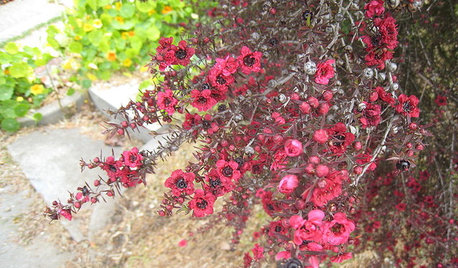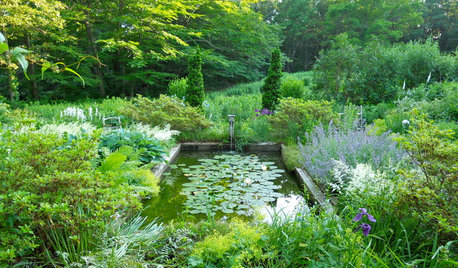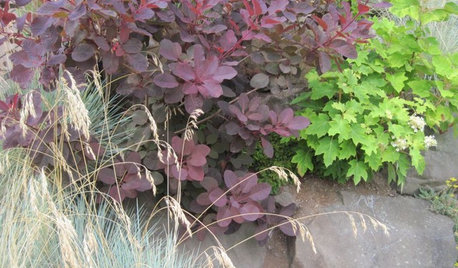Planting Sand Plum trees/shrubs
sandgrass
15 years ago
Related Stories

FRUIT TREESHow to Grow Your Own Juicy Plums
Easier than other stone fruits and with a variety of colors to choose from, plums are a versatile garden addition
Full Story
GARDENING GUIDES8 Deer-Resistant Elegant Evergreen Shrubs to Plant This Fall
Who knew that such beautiful shrubs could be deer-resistant?
Full Story
GARDENING GUIDESGreat Design Plant: New Zealand Tea Tree
Balance pretty polish and ruggedness in a temperate garden with this low-maintenance and drought-tolerant flowering shrub
Full Story
PLANTING IDEAS5 Reasons to Bring Shrubs Into the Flower Garden
Mix up the garden experience and let the flowers and shrubs play together
Full Story
GARDENING GUIDES10 Drought-Tolerant Shrubs That Thrive in Full Sun and Reflected Heat
Got a hot spot in your garden where plants often die? Try these tough shrubs that add beauty while shrugging off the heat
Full Story
PURPLE FOLIAGE5 Purple-Leaf Majesties of Shrubs
Looking for beautiful depth and dynamism in your landscape? Just add purple
Full Story
GARDENING GUIDESGreat Design Plant: Sambucus Nigra
Common elderberry is a highly adaptable shrub from the eastern U.S., with berries galore for wildlife and humans alike
Full Story
GARDENING GUIDESWhen and How to Plant a Tree, and Why You Should
Trees add beauty while benefiting the environment. Learn the right way to plant one
Full Story
ARBOR DAY8 Reasons to Plant a Great Tree
Beauty is its own reward, but the benefits of planting the right tree in the right place go way beyond looks
Full Story
TREES7 Deer-Resistant Flowering Trees to Plant this Fall
If you live in a neighborhood with roaming deer, consider these beautiful trees that won't tempt hungry guests
Full StoryMore Discussions






jaleeisa
ilene_in_neok
Related Professionals
Wrentham Landscape Architects & Landscape Designers · Lake Oswego Landscape Architects & Landscape Designers · West Chester Landscape Architects & Landscape Designers · Maple Heights Landscape Architects & Landscape Designers · Maple Valley Landscape Contractors · Canby Landscape Contractors · Eustis Landscape Contractors · Federal Way Landscape Contractors · Franklin Landscape Contractors · Fruit Heights Landscape Contractors · Midland Landscape Contractors · Pikesville Landscape Contractors · Westchester Landscape Contractors · Lauderdale Lakes Landscape Contractors · Harrisburg Decks, Patios & Outdoor Enclosuresrjj1
rjj1
Okiedawn OK Zone 7
sandgrassOriginal Author
okiegarden